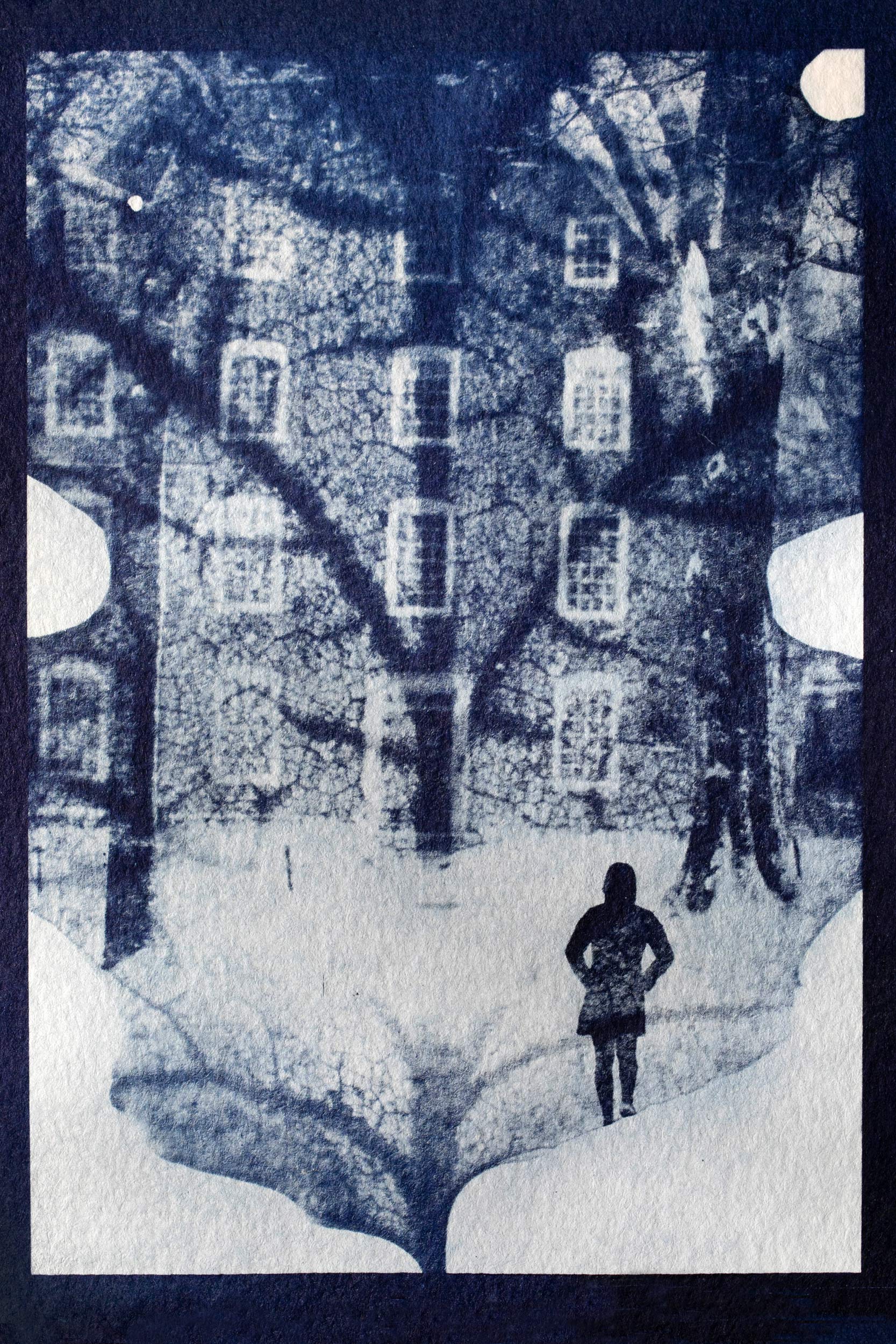
A cyanotype composites an oak leaf from Harvard Yard with a figure walking toward Massachusetts Hall.
Stephanie Mitchell/Harvard Staff Photographer
Trees along the paths of Harvard Yard — oaks, elms, maples, locusts, gingkos, dogwoods, and sweetgums — seasonally shed their leaves and seeds. Most are rapidly raked up by landscape service crews, while some are scooped up by students and visitors, mementos of their time in New England. A small sample, culled from the Yard, are on view here cast in cyan.
Cyanotypes use a mix of ferric ammonium citrate and potassium ferricyanide, making negative and positive images in cool shades and tonality. Objects are laid on paper or fabric treated with the UV-sensitive chemical combination, placed in the sun to create the image, and then developed in a water bath. Waxy autumn leaves, famous for their rich warm hues, are converted to icy tones.
The photographic printing process, invented by John Herschel in 1842, predates some buildings in Harvard Yard. Count Memorial Hall (1870-1877) and Widener Library (1915), pictured here, among them. Close-up images are composited with landscape scenes, made into transparencies, and placed under glass for their time in the sun. Leaves, pods, and cones are paired alongside the buildings they have neighbored throughout the previous seasons.
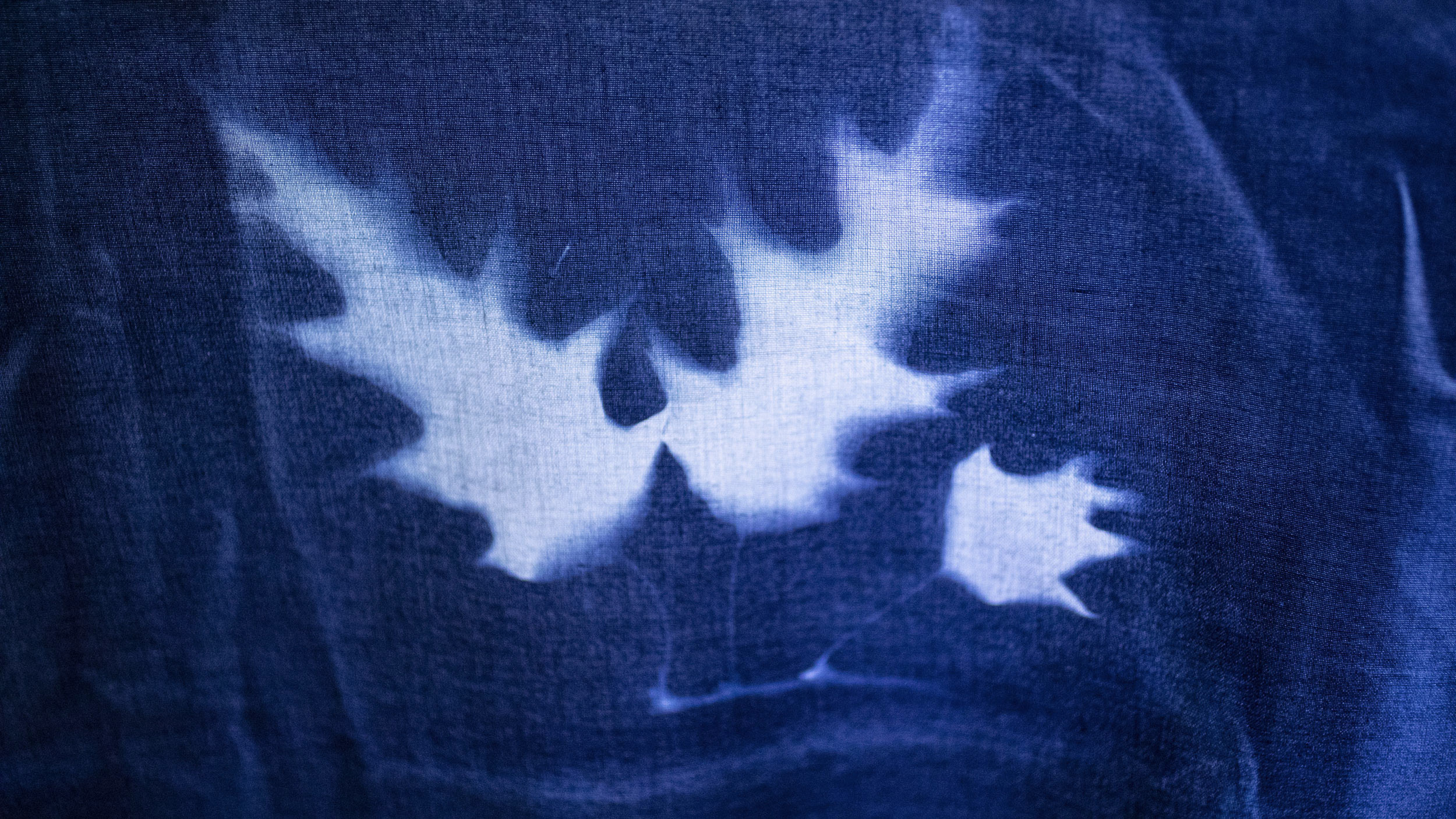
Two conjoined black oak leaves found in the Yard are recorded as a cyanotype on fabric.
Rose Lincoln/Harvard Staff Photographer
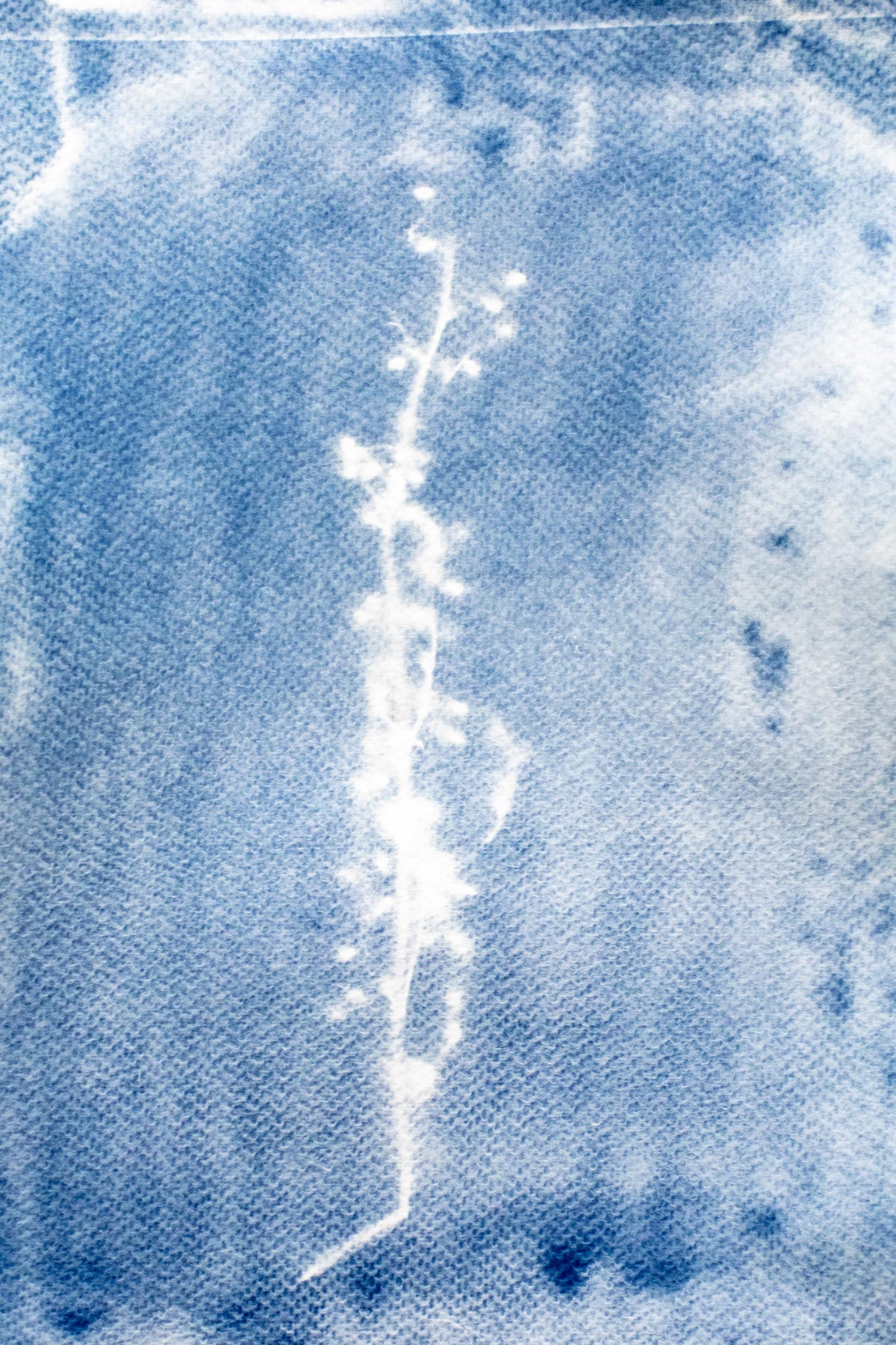
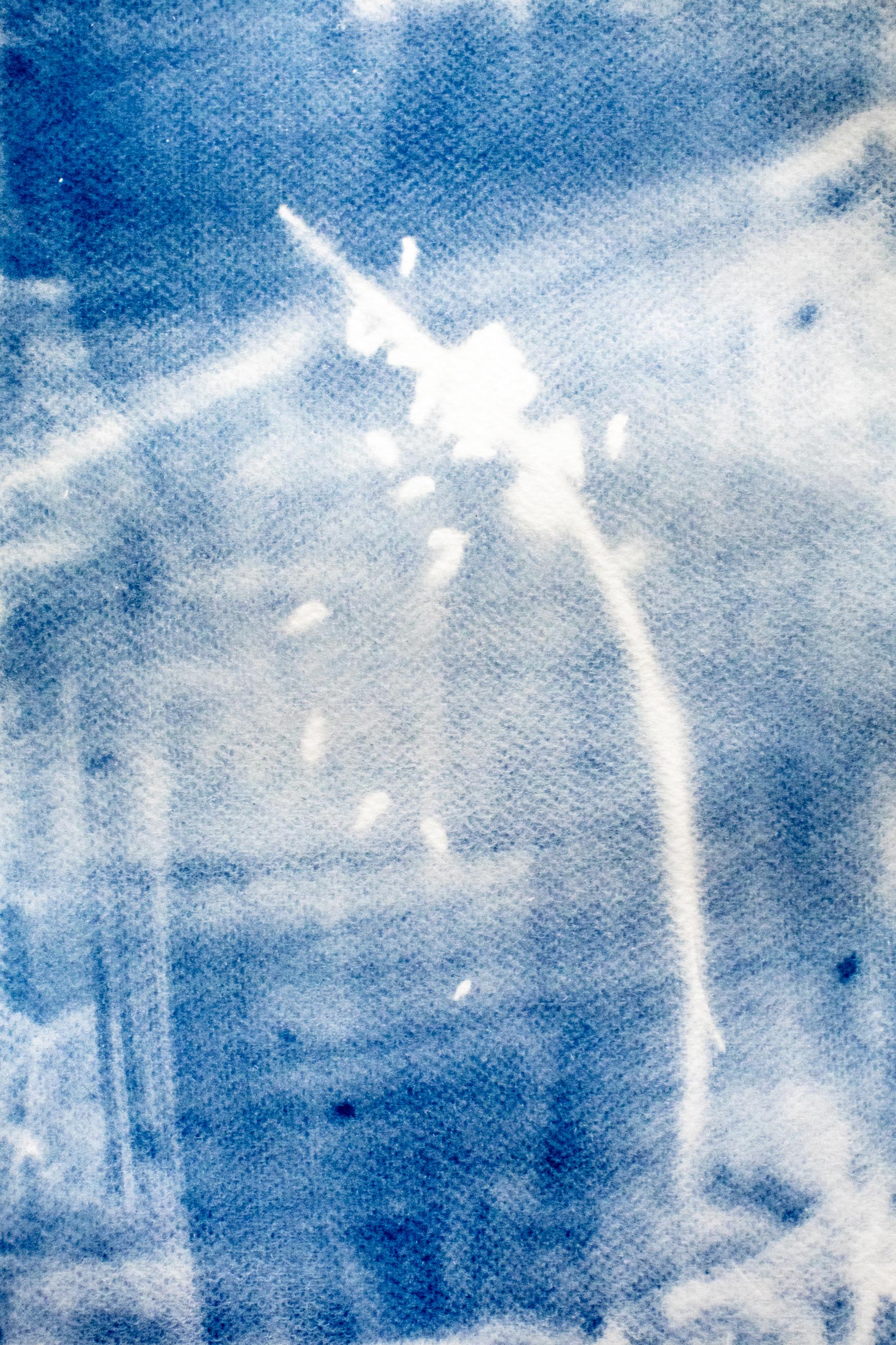
Cyanotypes of plants growing along the Charles River.
Photos by Rose Lincoln/Harvard Staff Photographer
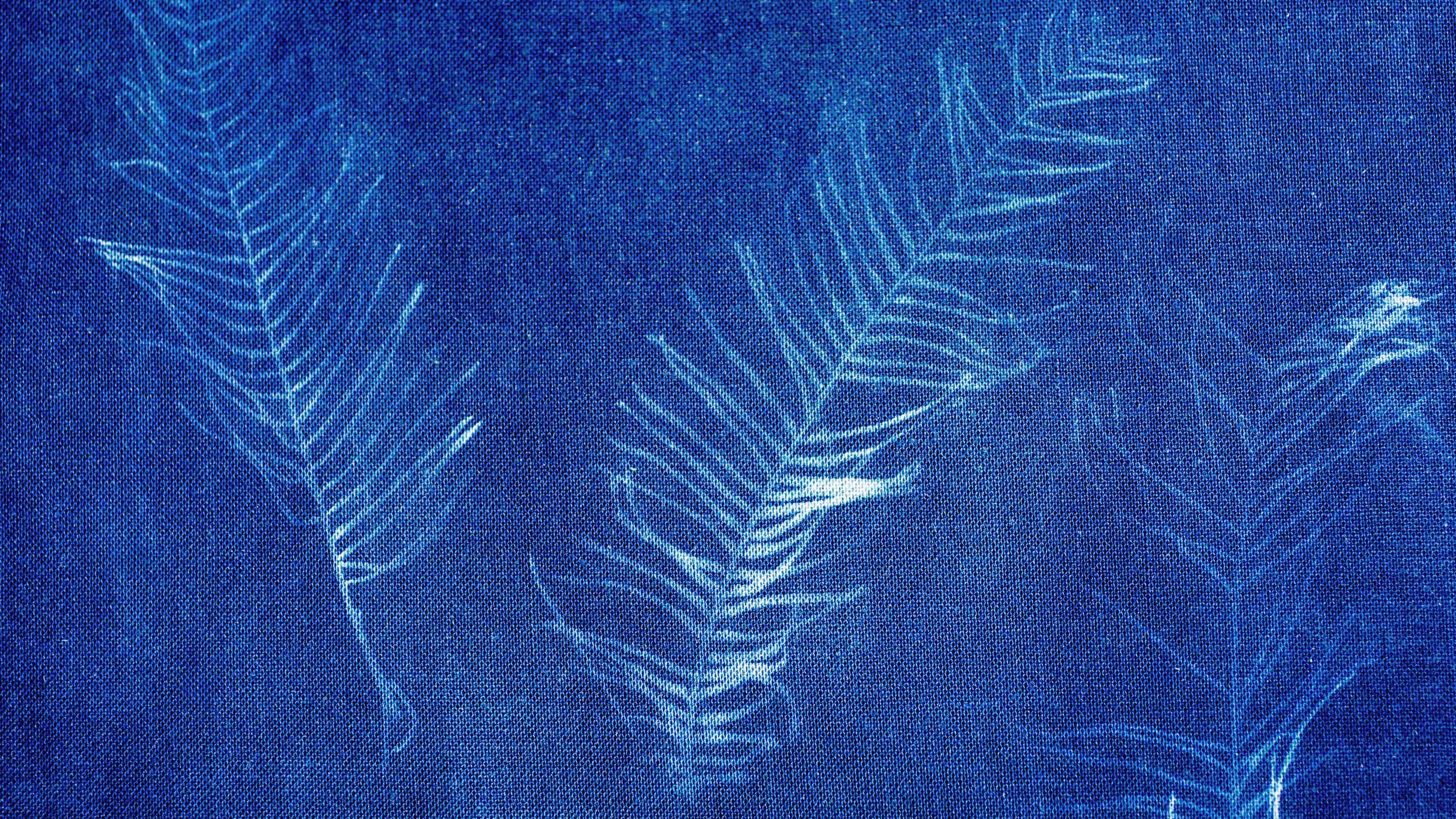
Needles of a dawn redwood, found between Sever and Robinson Halls, look like feathers when recorded as cyanotypes.
Rose Lincoln/Harvard Staff Photographer
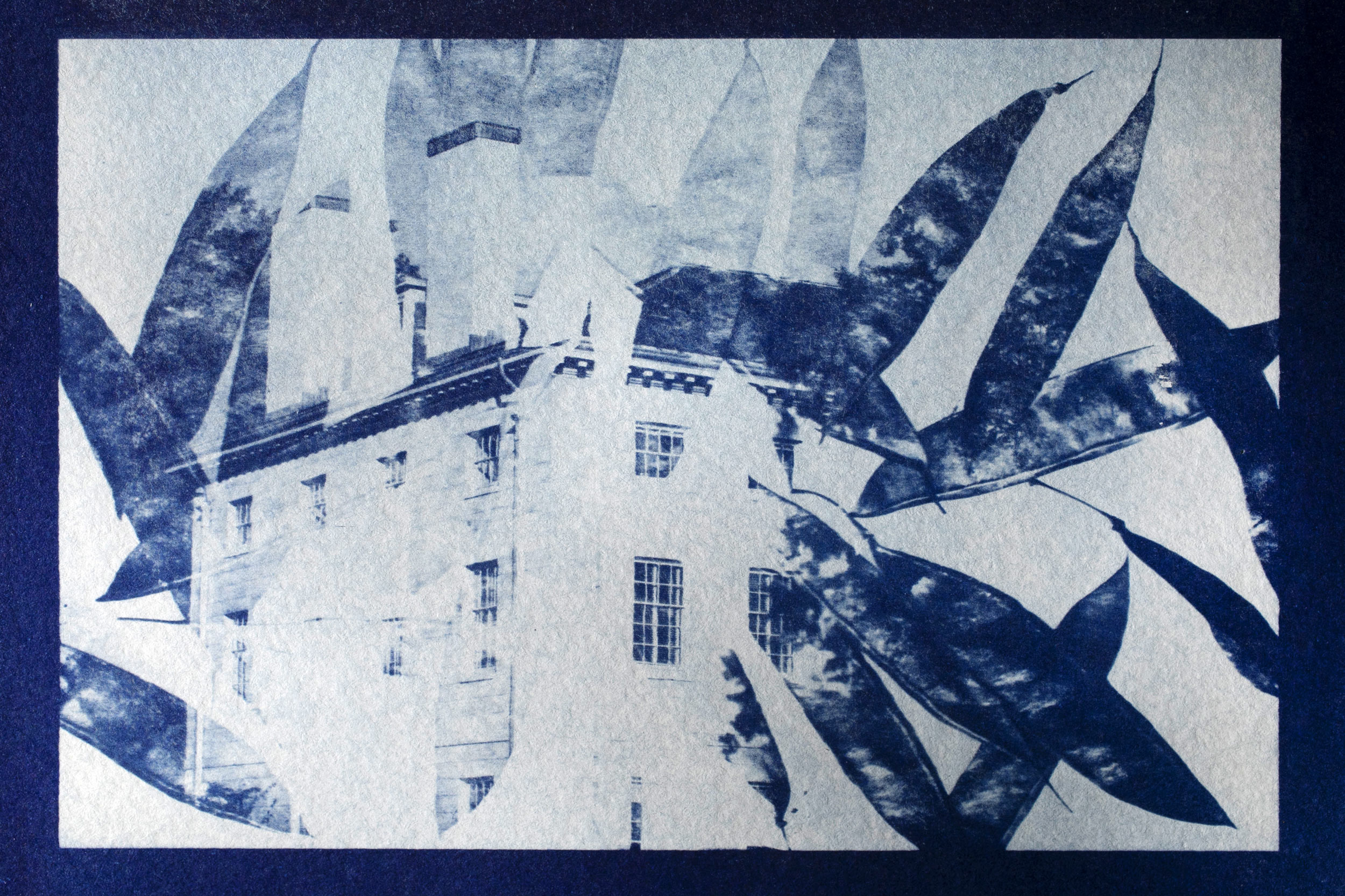
A cyanotype composites tree seed pods from Harvard Yard with University Hall.
Stephanie Mitchell/Harvard Staff Photographer
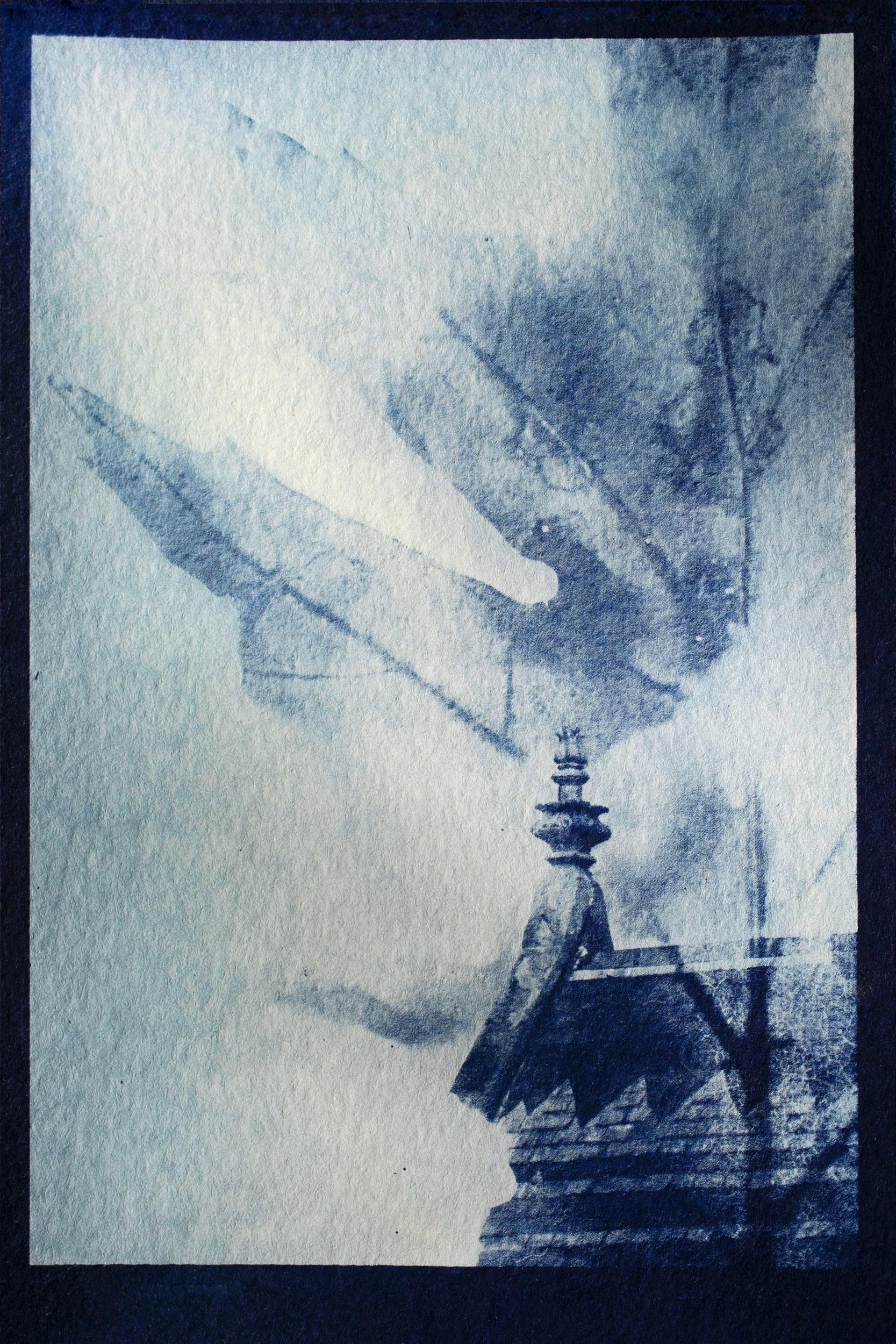
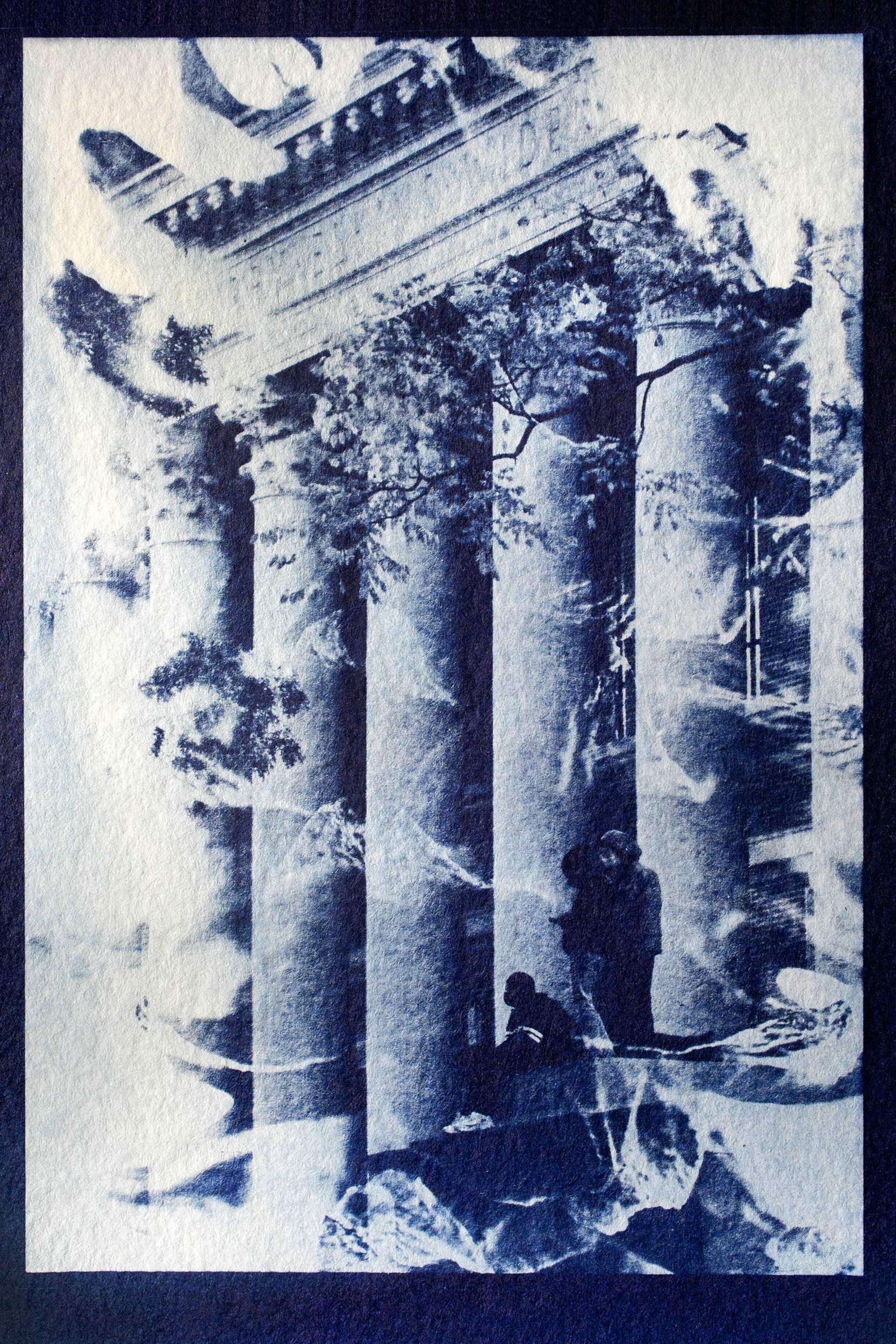
Cyanotypes composite a leaf from Harvard Yard with the rooftop of Memorial Hall and a pinecone with figures atop the steps of Widener Library.
Photos by Stephanie Mitchell/Harvard Staff Photographer
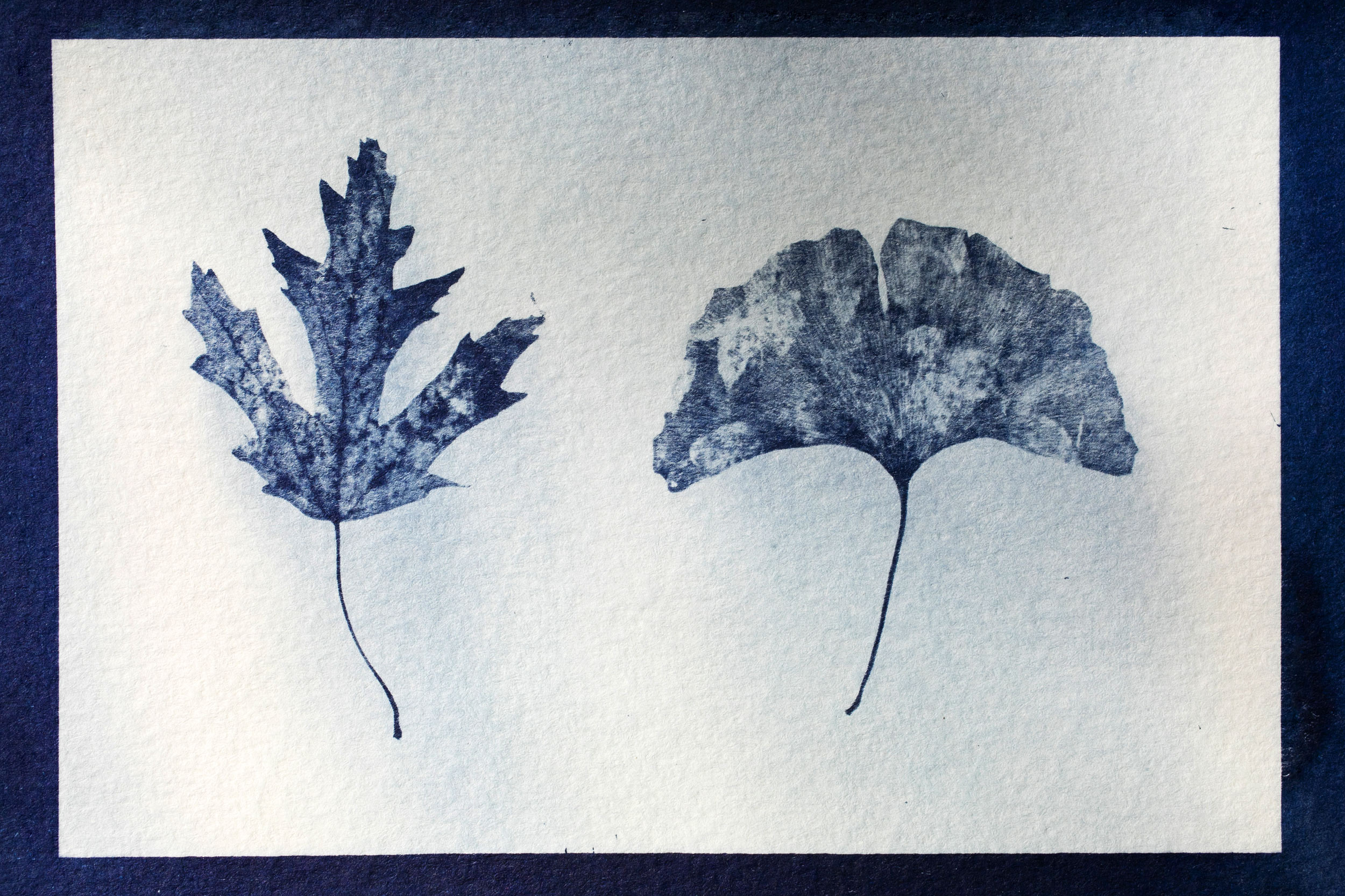
A cyanotype pairs two leaves, a maple and gingko, from Harvard Yard.
Stephanie Mitchell/Harvard Staff Photographer



